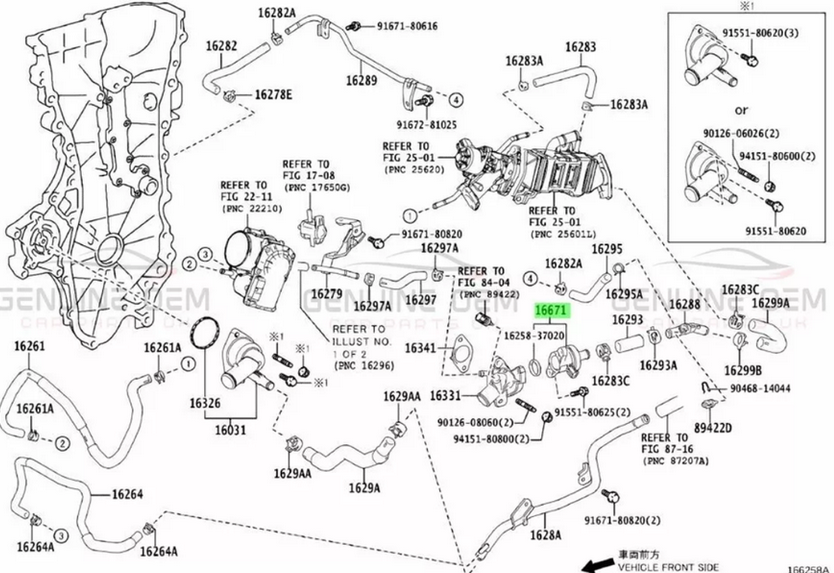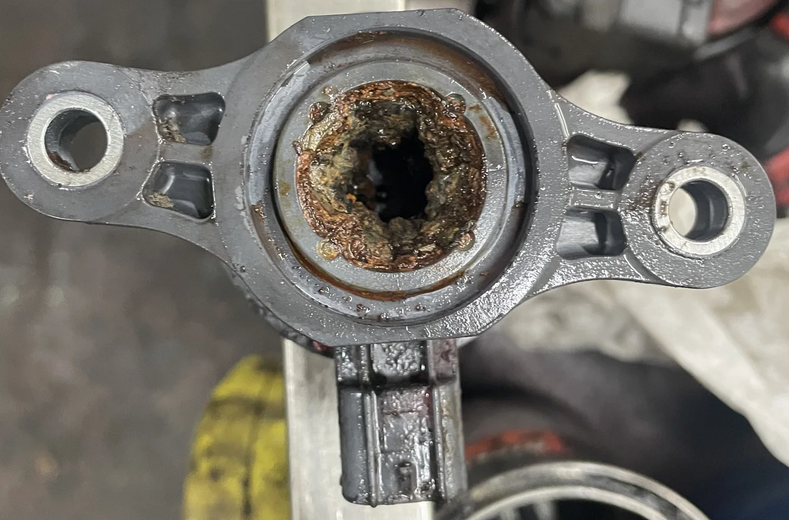
Squirrrel
Members-
Posts
259 -
Joined
-
Last visited
Everything posted by Squirrrel
-
The pertinent legislation is the Consumer Rights Act 2015.
-
Excellent observation; effectively articulated.
-
Enchantment! The vehicle appears to respond effectively to the key fob at a distance over 40 yards; therefore, I will attempt that valuable suggestion. I sincerely appreciate it.
-
Indeed. Annoyance and disapproval! Thank you for that. A rational sequence, and I had overlooked the 'feature'... We have possessed the vehicle since May, hence our emphasis has been on air conditioning rather than heating. It has been exceedingly wonderful as well. Apology. The previous vehicle was a B Numb W PHEV (225XE), which had the capability to pre-warm when necessary. It is worth noting that it did not have the same effect on the external mirrors, much to my dismay. The electric plug socket would not heat, which, on a notable cold occasion, hindered my appearance at an appointment because I was unable to extract the plug from the frozen socket and declined the recommendation to apply boiling water to the region. The Sportage model in my driveway is equipped with heated seats and a heated steering wheel, leading me to consider the possibility of a pre-heating feature. I am curious about the operation of the windscreen de-frost on an extremely chilly morning when the petrol engine requires warming up. It is likely to resemble the majority of vehicles I have encountered over the past many decades. Ice scraper prepared!
-
This morning, the Scheduled Charging functioned flawlessly, and inexplicably, without any alterations to the settings and without human intervention. The subsequent item on the comprehensive agenda is if the app may instruct the vehicle to climatize prior to departure, especially with winter approaching. The owner's manual appears to be ambiguous or even evasive regarding the issue. Request for feedback, please.
-
My third-generation Clubman is equipped with tire pressure sensors in the wheels, which are available in various colours to indicate different fitments. In contrast, pre-generation models, like yours, utilise ABS rings and sensors; a deflated tire rotates less than an inflated one, which the ABS detects. The advantage for you is that you can install any wheel you desire and perform a reset of the tire pressure warning, allowing the system to recognise the change. As a general guideline for speedo
-
You may consult an independent automotive gearbox specialist for guidance, and if you decide to change the fluid, Toyota would remain unaware unless you disclose this information.
-
My average efficiency since acquiring my Niro EV in October 2022, over 13,000 miles, is 3.9 miles per kilowatt-hour. Varies from 300 in summer to 220 in the depths of winter. The need of heating determines the severity of winter.
-
In my experience, when there is suspicion or detection of coolant leakage, changing just one component often results in several repairs. Therefore, if any portion of the cooling system begins to fail, I believe it is more prudent to replace all components. You will go on an extended journey of pursuing various components at different intervals in an attempt to rectify the failures as they manifest individually. One notable aspect of these vehicles is this. If they overheat, you are finished. Conclusion. Even a little indication of cooling issues might result in significant expenses. My L322 operates at half on the gauge under standard conditions; thus, if it overheats, there is insufficient time to halt and save the system before it becomes very hot. Although this is expensive, I recommend replacing all the hoses and plastic components entirely. As I said, it is expensive, but the assurance it provides justifies the cost for me. My perspective.
-
Increase the thermostat by one degree.
-
You are satisfactory, therefore.
-
What is the reason? As you have seen, attempting to "upgrade" the internal lighting is not a simple task.
-
Reversing bulbs are 21W single filament.
-
Thank you for your response and recommendations. In response to your inquiry, my car has exceeded 300,000 miles (not km). I connected it to a diagnostic machine (Snap-on), and it displayed the following problem code: P2681-72 Engine Coolant Bypass Valve Actuator is in a permanently open position. Please note that there are no EML lights visible on the automobile dashboard; hence, this is a code detected by the diagnostic system that is not clearly shown. We inspected the EGR valve, which was completely dry and impeccably clean, devoid of any dirt or oil, and showed no signs of obstruction whatsoever. Are there any more recommendations? Thank you.
-
Greetings, I own a 2016 Toyota Prius, Generation 4 (UK model). It has accumulated over 300,000 kilometres, having mostly served as an Uber/taxi during its lifespan. Nonetheless, do not allow this to astonish you, as it is likely one of the most meticulously cared for and well-maintained Priuses around. Operates as if it had only travelled 60,000 km (under optimal conditions). Consistently operated judiciously and never mistreated. No costs were withheld. It has lasted 2-3 weeks, and I have seen persistent juddering or jerking during acceleration. It resembles a malfunctioning sensation. The engine seems to be vibrating. This occurs just during acceleration and while engaging the gas pedal. In EV Mode or Hybrid mode, the juddering ceases, and the vehicle glides smoothly as expected. However, upon acceleration and engine engagement, the whole vehicle experiences juddering and jerking. This occurs from 0 mph to a maximum of 50 mph. I have completed the following tasks: I first replaced all four spark plugs with genuine Toyota spark plugs, which is my customary practice. My previous ones were still functional and had considerable longevity, however I proceeded to replace them—no difference ensued! I subsequently changed all four ignition coils, with only genuine Toyota components, although there was no discernible improvement. I put genuine Toyota Fuel Treatment into my fuel tank - no effect! Additional contextual information: There are no EML or any other warning lights illuminated on the dashboard at any time, even during instances of juddering and jerking; nothing has been shown so far. The oil and water levels are satisfactory, and there are no leaks or losses of either substance. My fuel usage is same; there has been no adverse impact in that regard. The vehicle is well cared after and maintained. Maintained every 10,000 to 12,000 miles with only premium components from Toyota. The engine operates on Castrol oil, since it is the best product available and offers extended longevity. The vehicle has only used Shell petrol and would never employ any other fuel. Kindly provide assistance; do you have any recommendations on the potential issue?
-
No, it may remain on diff; however, verify your hub nut before to committing, since they tend to corrode, necessitating drilling and chiselling. The drive shafts may get seized in the hub, necessitating a press tool for removal.
-
I used a press while doing rear installations on my vehicle; it was quite cumbersome due to the backing plate and the hub's configuration. A new backing plate was necessary since I severed the original, along with strategically positioned metal blocks to secure the hub in the press. With the new hub flange, the problem of removing the inner race will be eliminated.
-
It seems different, does it not? Have you attempted to search the febi component number on Google to get further photographs in the event that the febi website is inaccurate? Do you own a press or rear bearing removal tool for the task?
-
I have sent you a note; my contact information is located at the bottom of my entries.
-
Estimating, the cost for the clutch and dual mass flywheel (DMF) ranges from £1,000 to £1,500, dependent upon the service provider. I am uncertain of your location; but, I can provide you with a quotation for the clutch, DMF, and chains if you like. Currently doing that specific task on a 1 Series.
-
At 160,000 miles, if the clutch is changed, also replace the timing chain. When replacing chains at that mileage, I usually recommend that the clutch and flywheel be replaced simultaneously, since there is no additional labour expense; just the cost of materials is incurred as they must be removed to reach the chain. At 160,000 miles, I believe you are operating on borrowed time with the chain.
-
KIA Ceed 2019 GT-Line hatchback - right-side speakers
Squirrrel replied to VodScanner's topic in General
I cannot address all your concerns, except about the software upgrade. Initially, the update site is accessible just for vehicles equipped with the in-dash Kia satellite navigation system; if the vehicle lacks this system, updates are exclusively available via the dealer. Secondly, if you own the Kia satellite navigation system, you must access the information screen on the device, locate the media system model number, and input it into the updater.



